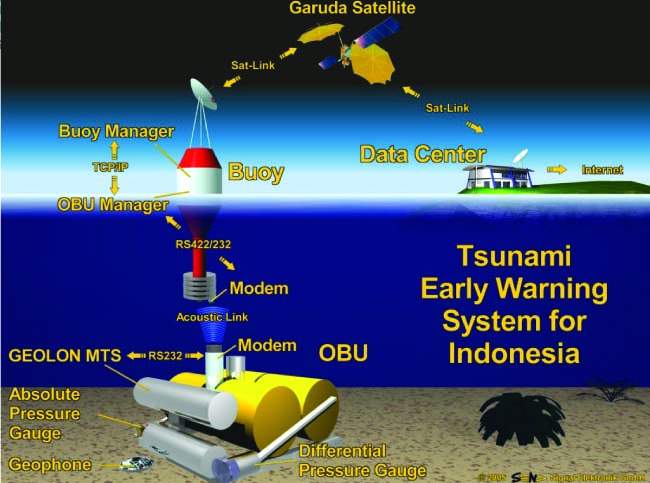JAKARTA - A large earthquake off the west coast of Indonesia has exposed major flaws in the multimillion-dollar warning system installed after the deadly 2004 Indian Ocean tsunami, raising questions about whether the country would be able to prevent a similar disaster.
None of the country’s 22 warning buoys were working at the time of the earthquake, Indonesia’s disaster agency said Thursday. An official separately blamed the malfunctions on vandalism by fishermen and inadequate maintenance.
Indonesia straddles the Indian and Pacific oceans in one of the world’s most seismically active areas. On Wednesday evening, a shallow 7.8-magnitude quake struck about 500 miles from Padang in West Sumatra province, stirring panic and sending residents scurrying for higher ground. No killer wave materialized and no damage or deaths were reported.
Authorities issued a tsunami warning, but struggled to acquire the data needed to rescind it quickly, waiting nearly three hours until it was clear that massive waves hadn’t formed.
Sutopo Purwo Nugroho, a spokesman for the National Disaster Management Agency, said all of the 22 buoys in the area operated by Indonesia needed to be replaced. Five other buoys operated by India, Thailand, the U.S. and Australia were working, he said. However, those are much further from the Sumatra coastline than the Indonesian-operated buoys.
After the 2004 earthquake and tsunami, which killed an estimated 228,000 around the Indian Ocean, regional tsunami-warning centers were set up in Indonesia, India and Australia. These centers use a series of seismic sensors that sit on the seafloor and floating buoys that relay information to land using satellites.
Knowing how big a wave is and being able to estimate when it will arrive onshore is crucial to determining how much flooding will result and creating more targeted evacuations, said Costas Synolakis, director the Tsunami Research Center at the University of Southern California.
“This is not a trivial matter,’’ Mr. Synolakis said. “False warnings diminish the credibility of the system, people become cynical and complacent.”
Djoko Hartoyo, a spokesman for the Coordinating Ministry of Maritime Affairs who worked as a project manager on the buoy warning system from 2007 to 2011, blamed the malfunctioning on ``vandalism,’’ saying that fishermen have tampered with the buoys by removing their antennas, preventing them from sending data to the main tsunami warning center in Jakarta.
Another major concern is lack of maintenance. Mr. Hartoyo said Indonesia has tried to fix damaged buoys but doesn’t have the budget to do so. Mr. Nugroho estimated that Indonesia would need around 30 billion rupiah ($2.2 million) a year to maintain its 22 buoys.
Officials responsible for budgeting weren’t immediately available to comment on the matter.
Parts of Indonesia’s warning system did work on Wednesday. The temblor struck just before 8 p.m. and Indonesia’s meteorological agency quickly issued a tsunami warning based on a system of projections made after an earthquake occurs. Alarms sounded and people moved to higher ground.
But officials say public preparedness remains limited. Some people still head to the coast to check the sea level rather than heed evacuation warnings. Others try to leave cities and towns by car or motorcycle, causing traffic jams—something that happened Wednesday and during a similar earthquake in 2012.
Public confidence in evacuation buildings—tall structures built after 2004 as safe places for residents in low-lying areas -- is also very weak. People often try to go to distant higher ground rather than the shelters closer at hand, Mr. Nugroho said, adding that local governments need to conduct drills more frequently to increase preparedness.


No comments:
Post a Comment